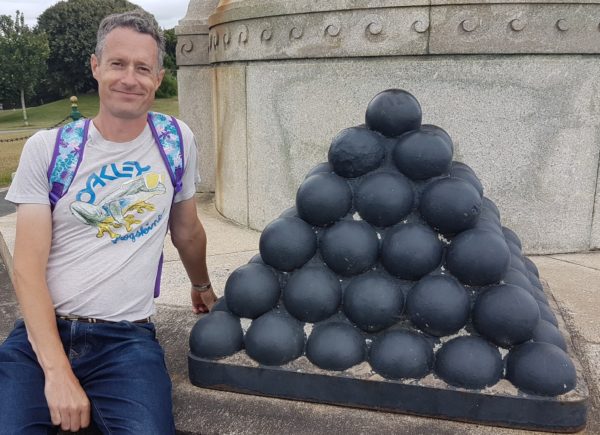This pyramid of cannonballs appears at the foot of the Armada Monument on Plymouth Hoe. It consists of six layers: a single cannonball at the apex, resting on a square of 4 cannonballs, resting on a square of 9 cannonballs, and so on for a total of 6 layers.

A reasonably curious mathematician might wonder how many cannonballs there are in the entire pyramid (including the “hidden” ones you can’t see on the inside of the pyramid).
The answer is the sixth Square Pyramidal number – which I’ll call
To find the total we could just go from layer to layer, adding as we go:
To put this another way:
The first Square Pyramidal Number consists of only the first layer, so 1 object.
Add the next layer and we have 5 objects in total.
The third layer adds another
The sequence continues: 1, 5, 14, 30, 55, 91, …
Counting layer by layer works ok for small pyramids like our n=6, but suppose you had a 45 layer pyramid, starting with one at the apex and continuing for 44 more layers (with
The
When n=6 our formula gives
Yes! Other related sequences include the Tetrahedral numbers (given by the sum of the first n triangular numbers), and also the pentagonal, hexagonal or even higher order pyramidal numbers. Head over to the OEIS and if you can figure out the first few terms, the database will give you the next few, plus some interesting facts.
NOTIFY ME OF NEW POSTS BY EMAIL (approx one a month):
[mc4wp_form id=”399″]